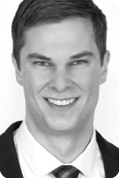
Some eye care providers may see an article or a presentation on soft contact lenses and immediately let out a yawn, assuming that the technology has been around for awhile and is, thus, the same old, same old. In reality, there is a lot of excitement currently in the contact lens industry, as it faces challenges and opportunities similar to those of the refractive and cataract surgery fields, challenges that revolve around giving patients of all ages the option to be independent of glasses. This, of course, becomes significantly more challenging in the presbyopic population, especially because the visual demands of these patients are increasingly shifting more toward near-vision goals.
AT A GLANCE
- The contact lens industry faces the challenge of giving patients of all ages the option to be independent of glasses.
- In the evolution of contact lens technology, the primary goals include improving both all-day comfort and optics to address presbyopia and digital eyestrain.
- A thorough understanding of and experience in new lens designs is imperative for growing a successful contact lens practice.
A recent study by Efron et al looked at prescribing trends over a 13-year period, from 2002 to 2014, including data from 1,650 practitioners and 7,700 contact lens fits in the United States.1 The mean age of lens wearers was 33.6 years (±15.2 standard deviation), and 65.2% were female. New rigid lens fits decreased from 13% of overall contact lens fits in 2002 to 9.4% in 2014. Over this period, silicone hydrogel materials, which were prescribed nearly 75% of the time, replaced hydrogels as the soft lens material of choice. Toric lenses represented about 25% to 30% of all soft lens fits. Daily disposable lens fits continued to increase; in 2014, they represented 27.1% of all soft lens fits.1
It is an exciting time in the evolution of contact lens technology. This article details new contact lenses that I have enjoyed working with and that have proven to be successful for my patients. These include multifocal lenses for the aging population, aspheric lenses to fight computer eyestrain, and a new therapeutic soft contact lens.

Figure 1. The 1-Day Acuvue pupil-optimized designs.
MULTIFOCAL CONTACT LENSES
The race is on in the contact lens industry to improve both all-day comfort and optics to address presbyopia and digital eyestrain. Perhaps the biggest opportunity for contact lens development is a combination of these two challenges—providing visual and ocular comfort to presbyopes in a contact lens. The idea that multifocal modalities would now be increasing in popularity seems intuitive; however, the market does not appear to reflect this as much as one might think. For example, according to one report published earlier this year, multifocal contact lenses made up 9% of contact lenses sold in the United States, 6% in Germany, and 4% in the United Kingdom.2 Additionally, the dropout rate continues to be a factor, with one study noting a 1-year retention rate of 57% among multifocal contact lens wearers compared with 78% among spherical lens wearers.3
Pupil size optimization. The size of the contact lens’ center optical zone in respect to pupil size is an important factor for multifocal success. The 1-Day Acuvue Moist Multifocal (Johnson & Johnson Vision Care) has gone further than other lenses in the market in addressing pupil size. Most multifocal designs account for variations in pupil size with age or with increasing add power. However, the design principle of the 1-Day Acuvue Moist Multifocal lenses, known as IntuiSight technology, matches variations with both age and refractive error (Figure 1), resulting in 183 different optimized, center-near designs across the prescription and add ranges.
A study by Dumbleton et al4 measured pupil size and visual acuity among patients aged 18 to 78 years. The study found that three factors affect pupil size and visual acuity: (1) age, (2) distance refraction, and (3) luminance. In general, older patients and hyperopes have smaller pupil sizes, with the greatest difference under low luminance conditions.4
Recently, the incorporation of spherical aberration in multifocal lens design has been recognized as an advantage, as it increases depth of focus on the retina. However, spherical aberration is significantly affected by pupil size; given the same amount of spherical aberration in a lens, a 6-mm pupil will create a considerably greater degree of defocus than a 3-mm pupil. Using the same multifocal contact lens in an eye with a 6-mm pupil and one with a 3-mm pupil will likely yield very different outcomes.
Personalizing lens design based on pupil variability as a function of age and refractive error can lead to a high fit success rate—94% with four or fewer lenses, 81% with three lenses (first pair plus one change), and 69% with the first pair trialed.3

Figure 2. The Dailies Total1 multifocal lens integrates different material properties into one lens: The core is made of a silicone hydrogel material with low water content, and the surface is made of an ultrasoft hydrophilic polymer.
Water gradient technology. Contact lenses that are marketed to the aging population, such as multifocals, must consider other factors associated with aging, including increased prevalence of dry eye disease and ocular surface disease. The Dailies Total1 lens (Alcon) was recently released in multifocal modality (Figure 2). The core of this lens is made of silicone hydrogel material with a low water content, giving it high breathability and modulus that allows easy handling. The surface is made of a unique ultrasoft hydrophilic polymer that reduces interactions with the delicate tissues of the eye and mimics the function of the cornea’s natural glycocalyx. The lens boasts an overall oxygen transmissibility of 156 Dk/t.
A study by Michaud and Forcier found that patients with contact lens–related dryness experienced an increase of 3.1 hours of comfortable wear time with Dailies Total1 Multifocals compared with their habitual lenses.5 Dailies Total1 lenses have a 96% fit success rate, with success being defined as using four total lenses or less during the fitting process.6,7
COMPUTER EYESTRAIN
In today’s digital world, near vision struggles involve more than just presbyopia. According to research performed by CooperVision within a population of frequent digital device users, 75% reported eye tiredness and dryness at least once per week, and 35% once per day or more. More than 90% of adults use digital devices for more than 2 hours a day, and nearly 60% use them for more than 5.8
Biofinity Energys (CooperVision) lenses feature what the manufacturer calls a Digital Zone Optics lens design, which helps decrease digital eye fatigue by recruiting multiple front-surface aspheric curves throughout the contact lens. These curves distribute power evenly to simulate positive power across the entire optic zone, so wearers can change focus from on-screen to off-screen and back with less effort.
After 1 week of wear, eight of 10 digital device users noted that the Biofinity Energys lenses made their eyes feel less tired, according to CooperVision. The lens is available in the same material and parameters as the Biofinity spherical lenses.
THERAPEUTIC SOFT CONTACT LENSES
Therapeutic soft contact lens technologies are also in development. EyeYon Medical has received US FDA approval and the CE Mark for its Hyper-CL contact lens (Figure 3). I have not yet integrated this lens into my practice, but the concept seems intriguing. This novel 14-day disposable contact lens includes fenestrations in the surface and a reservoir. Topical drops applied to the eye fill the reservoir and remain in contact with the eye for an extended period. The prolonged contact with hyperosmolar medications helps treat corneal edema and protect the corneal surface. Patients with corneal edema with a tenuous epithelium secondary to corneal issues such as bullous keratopathy or anterior basement membrane dystrophy would likely benefit from this technology. It may be a niche product, but it could provide this patient population with a good treatment option to more efficiently resolve corneal edema. The contact lens can also include optical correction if needed.9

Figure 3. The EyeYon Medical Hyper-CL therapeutic soft contact lens.
CONCLUSION
Contact lens materials and optics continue to improve. Practitioners should routinely evaluate what fitting sets they have in the office and stay up to date with the latest technologies in order to provide the best care for their patients. Long gone are the days of being able to survive with the mindset that every lens fits and performs in a relatively similar fashion. Gaining knowledge of and experience with new lens designs is imperative for growing a successful contact lens practice.
1. Efron N, Nichols JJ, Woods CA, Morgan PB. Trends in US contact lens prescribing 2002 to 2014. Optom Vis Sci. 2015;92(7):758-767.
2. Sulley A, Young G, Hunt C. Factors in the success of new contact lens wearers [published online ahead of print November 3, 2016]. Cont Lens Anterior Eye. doi:10.1016/j.clae.2016.10.002.
3. Dave T. Understanding multifocals and getting them to work. Optician. 2015;249;6505:12-17.
4. Dumbleton K, Guillon M, Theodoratos P, et al. The effects of age and refraction on pupil size and visual acuity: implications for multifocal contact lens design and fitting. Paper presented at: the British Contact Lens Association Clinical Conference; May 29, 2015; Liverpool, UK.
5. Michaud L, Forcier P. Comparing two different daily disposable lenses for improving discomfort related to contact lens wear. Cont Lens Anterior Eye. 2016;39(3):203-209.
6. Alcon launches Dailies Total1 Multifocal contact lenses, the first and only water gradient lenses designed for people with presbyopia. Eyewire Today. July 29, 2016. http://eyewiretoday.com/2016/07/29/alcon-launches-dailies-total1-multifocal-the-first-water-gradient-contact-lenses-designed-for-people-with-presbyopia. Accessed October 29, 2016.
7. Pérez-Gómez I, Giles T. European survey of contact lens wearers and eye care professionals on satisfaction with a new water gradient daily disposable contact lens. Clin Optom. 2014;6:17-23.
8. CooperVision unveils Biofinity Energys contact lenses specifically designed for digital device users. Eyewire Today. June 30, 2016. http://eyewiretoday.com/2016/06/30/coopervision-unveils-biofinity-energys-contact-lenses-specifically-designed-for-todays-digital-world. Accessed October 29, 2016.
9. EyeYon Medical. Hyper-CL for treating corneal edema. http://www.eye-yon.com/hyper-cl/. Accessed October 29, 2016.


